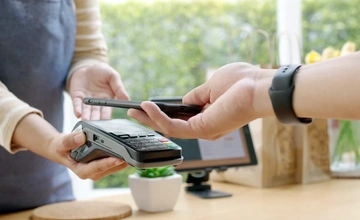Scam messages and dodgy links seem to be everywhere these days — and delivery scams are one of the most common. In 2024 alone, 42% of people in the UK said they’d been targeted by scammers, with fake parcel delivery texts being one of the fastest-growing types.
With that in mind, we’ve pulled together some of the most common delivery scams to look out for — and what to do if you think you’ve been targeted.
What is a delivery scam?
A delivery scam is when fraudsters pretend to be a trusted courier (like Amazon, DPD or Royal Mail) to trick you into sharing personal information, making a payment or clicking a dangerous link.
There are two main types of delivery scam:
- Brushing scams – you receive a parcel you didn’t order
- Phishing or smishing scams – you’re contacted by email or text with a fake delivery update
Both types can lead to fraud, identity theft or other serious issues – so it’s important to stay alert.
1. Amazon delivery ‘brushing’ scam
This scam involves receiving a parcel from Amazon that you didn’t order.
Fraudsters get hold of your name and address and send you an unsolicited item. Then, they write fake five-star reviews on Amazon pretending to be you – boosting their seller ratings.
What to look out for:
- A package arrives you didn’t order, often without a return address
- Common items include seeds, Bluetooth speakers, or other cheap electronics
- The sender details may be vague or missing altogether
What to do:
- Check with family and friends to make sure it wasn’t a gift
- If not, change your Amazon password and report it via Amazon’s customer service department
- You’re allowed to keep, donate or bin the item – it’s yours
Find out more about brushing scams and how to spot them.
2. DPD parcel delivery scam
You may receive a text or email saying DPD missed a delivery attempt. It asks you to click a link and pay for redelivery – even though no parcel exists. This is a common DPD scam.
Once you enter your details, fraudsters can steal your personal or bank information.
Spot the scam:
- The email sender isn’t from @dpd.co.uk, @dpdlocal.co.uk or @dpdgroup.co.uk
- The links don’t begin with www.dpd.co.uk/ or www.dpdlocal.co.uk/
- You’re asked to pay or enter sensitive info
Report it:
Call DPD on 0121 275 0500 to check if the message is genuine.
3. Evri delivery scam
This scam is similar to DPD’s – a text or email claims there’s an issue with your delivery or payment details. It contains a link to a fake website.
Signs it’s fake:
- The email comes from an unfamiliar address
- Common subject line: “Evri – Verify yourself”
- You’re asked to pay via text, which Evri never does
Genuine Evri email addresses:
- @evri.com
- @hermes-europe.co.uk
- @myhermes.co.uk
Report it:
Call 0330 808 5456 or use Evri’s webchat to confirm if the message is real.
4. Royal Mail delivery scam
Scam texts and emails pretend to be from Royal Mail, asking you to pay a fee or confirm delivery info.
The tricky part? Royal Mail sometimes genuinely needs you to get in touch – like when postage is underpaid. But they’ll usually leave a card through your door, not ask you to click a link.
How to tell if it’s a scam:
- No delivery card was left
- The message has spelling mistakes or generic greetings
- You’re asked to pay or click a suspicious link
Report it:
- Forward scam emails to: [email protected]
- For scam texts, take a screenshot and email it to the same address
5. Post Office delivery scam
This scam involves a text message saying your parcel has been returned to a Post Office depot.
The message links to a fake website that looks just like the real Post Office – and asks you to enter personal info, like your name, address and date of birth. This data can be used for identity fraud.
Red flags:
- You weren’t expecting a delivery
- The link doesn’t match the official Post Office site
- There’s no mention of payment, but they’re harvesting your data
Report it:
Email screenshots and details to: [email protected].
General signs a delivery scam could be fake
No matter the company, these warning signs should make you think twice:
- Bad spelling or grammar – poor-quality communication can be a red flag
- Generic greetings – “Dear Customer” instead of using your name
- Suspicious links – especially if they urge you to click quickly
- Unexpected requests for payment – especially via text or dodgy-looking sites
How to protect yourself from delivery scams
Keep yourself safe by remembering the following:
Stop – pause and take a moment before acting
Challenge – ask yourself if the message could be fake. If in doubt, contact the company directly using official contact details.
Protect – if you’ve fallen victim, contact your bank immediately. Then:
- Report the scam to Action Fraud
- Forward scam emails to: [email protected]
- Forward scam texts to: 7726 (that spells "SPAM" on your phone keypad)
For more tips, check out the scam reporting guidance from Citizens Advice.
If you’ve been affected by a scam, you’re not alone – and it’s not your fault. The best thing you can do is stay informed, protect your details, and report anything suspicious.
Fiona is a personal finance writer with over 7 years’ experience writing for a broad range of industries before joining Ocean in 2021. She uses her wealth of experience to turn the overwhelming aspects of finance into articles that are easy to understand.










